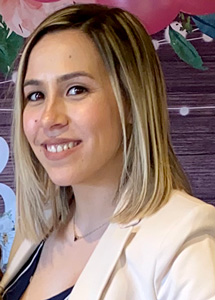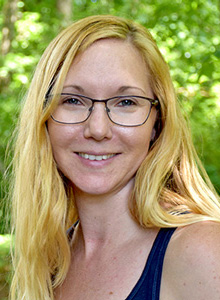It can be challenging to meet the needs of every student within the public school setting. For many students with autism, their academic needs are best met in a self-contained, special education classroom that utilizes the principles of applied behavior analysis. However, this can be limiting in terms of social skills and good role models for play behavior. Students with autism may not yet be ready to go into a general education classroom to be mainstreamed for part of the day and may not have an opportunity to socialize with general education peers in a structured or planned setting. The use of general education peer buddies coming into the special education classroom can help bridge the gap by providing role models and structured opportunities for language, play, and social skills. Reverse inclusion can provide students with autism a familiar environment to begin interactions with their typically developing peers which may then lead to further opportunities for inclusion in the future.

Lizette Posada, MEd

Jacqueline Dobres, MS, OTR/L, BCBA
Reverse Inclusion
Reverse inclusion (i.e., reverse mainstreaming) is the placement of neuro-typical students in a self-contained classroom with students with disabilities for an allotted period of time. According to IDEA, students with disabilities should learn in the Least Restrictive Environment, meaning that these students should spend the “maximum extent that is appropriate” with their nondisabled peers (Individuals with Disabilities Education Act, 20 U.S.C. §§300.115-300.120 (2004)). It is not always appropriate for students with autism to be placed in the general education setting, even for a short duration of time.
Schools nationwide have been striving to implement additional mainstreaming and inclusion opportunities for students with autism spectrum disorder. Countless research has been conducted to support the benefit of inclusion for all students involved (i.e., special education students and general education peers). Typical inclusion settings are not always appropriate for all learners especially those in self-contained ABA classrooms.
Peer Buddy Program
The development of a peer buddy program can help bridge this gap. Our public school peer buddy program consists of general education students coming into the self-contained classroom for structured group activities or individual speech sessions. We begin by asking general education teachers to nominate students that they feel would be well-suited to be a peer buddy. This may be a student who is kind, follows directions, can be a leader, or is confident. Alternatively, it may be a student who may benefit from added positive attention from teachers. We then send a letter home to those students’ parents to ask for permission to interview their child. The student is next interviewed by a committee that may include the school counselor, BCBA, special education teacher, and/or speech language pathologist. The student is asked a variety of questions to gather information as to how they might respond in certain situations. We provide the students with age-appropriate information about children with autism and explain what they might hear or see in one of our self-contained ABA classrooms. The interview is concluded by asking students if they would like to be involved with our peer buddy program.
Peers are then divided into two groups and given training as to what they will be doing. One group is called the “greeters” and the other group is labeled the “buddies.” The “greeters” are given training on establishing attention and delivering greetings in the hallway. They have specific locations throughout the school where they stand and greet students at arrival and during lunchtimes. This allows for additional interaction between special education students and their general education peers as well as generalization of responding to greetings.
The “buddies” are given additional training on what autism is, how children with autism communicate (i.e., gestures, sign language, PECS, augmentative boards, verbal output, etc.,) and how to work within the classroom setting. They are shown how to deliver instructions (e.g., getting the child’s attention, saying it one time, and waiting for them to respond), how to deliver reinforcement (e.g., tangibles or tokens), and how to be a good role model. The buddies are paired with a specific class for a designated time giving the teachers an opportunity to plan lessons which include the buddies. Lessons can be structured play sessions, group activities, playing games, etc.
At the start of each session, we review the current goal for the day. This is an opportunity for ongoing peer training which may resemble feedback based on the previous session, a reminder about what we would like them to do that day, or role-playing a certain skill such as delivering reinforcement. Examples of goals that may be targeted during a session include: group goals of responding to greetings from the peers, following directions from the peers, requesting either preferred or missing items from the peers, imitating a peer’s behavior/action. Individual goals may include things like approaching a peer and asking to join an ongoing play activity or following group instructions. We also track the progress of our buddies based on selected goals. Goals for buddies can include greeting their peers with special needs, responding to requests made by the peer with special needs, and giving praise and reinforcing statements to the student with special needs throughout the activity.
Benefits of the Program
We have found that there are benefits for both the students in special education and general education who participate in this program. For the peer buddies, it not only increases their own awareness of students with disabilities, but also increases other students’ (who are not in the program) awareness of students with disabilities. It can further develop the peer buddies’ own social/emotional skills, be extremely motivating, and decrease their own attention-seeking behaviors within their general education setting. For those general education students that are acting as greeters, it increases their awareness of appropriately modeled greetings to students with disabilities, and strengthens their confidence as well as their social-emotional skills.
For the student with autism spectrum disorder, the program creates more naturalistic modeling opportunities, helps provide a chance to generalize skills, increases social-emotional and play skills, and generates an opportunity to form a bond with another student in the school that they see during transitions in the halls.
The use of a peer buddy program has also aligned well with our school-wide initiatives for inclusion and acceptance of all students. The school presents character traits at monthly assemblies that increase students’ awareness of their own selves as well as how to be more community minded within the school. In April, for Autism Awareness Month, the entire school participates in a project that targets students’ understanding of good role models and inclusion. We also host our annual Spring Fling, an afterschool event for those students in our special education classes and their families as well as the peer buddies and their families. This allows for an additional opportunity for the students to see one another in a fun setting outside of the regular school day. We have found that the use of reverse inclusion has filled a gap in programmatic options for students with an IEP that still require a self-contained classroom for learning by providing them access to typically developing peers to serve as role models for language and play skills.
Jacqueline Dobres, MS, OTR/L, BCBA, is a Behavior Analyst and Lizette Posada, MEd, is a Special Education ABA Teacher at Piscataway Public Schools in NJ. For more information, email jdobres@pway.org.
References
Baker, Linda Kaempfer, “Implications of a Reverse Inclusion Program for Students with Moderate to Severe Disabilities” (2015). Capstone Projects and Master’s Theses. 503. https://digitalcommons.csumb.edu/caps_thes/503
Delmolino, L. (2015). Solve Common Teaching Challenges in Children with Autism: 8 Essential Strategies for Professionals & Parents (Topics in Autism). Woodbine House Inc., U.S.
Katrine Sophie Gunn, David Trembath & Kristelle Hudry (2014) An examination of interactions among children with autism and their typically developing peers, Developmental Neurorehabilitation, 17:5, 327-338, DOI: 10.3109/17518423.2013.778348
Toole, J. (2016). How to Talk with Friends: A Step-by-Step Social Skills Curriculum for Children with Autism. Happy Frog Press.





Absolutely love this. My son is autistic and his new school has accepted him into a class that has more interactions and buddy system similar to this. he also has a buddy that he goes to Cross Country with that makes sure he gets there safe and runs with him. So happy with this new school.